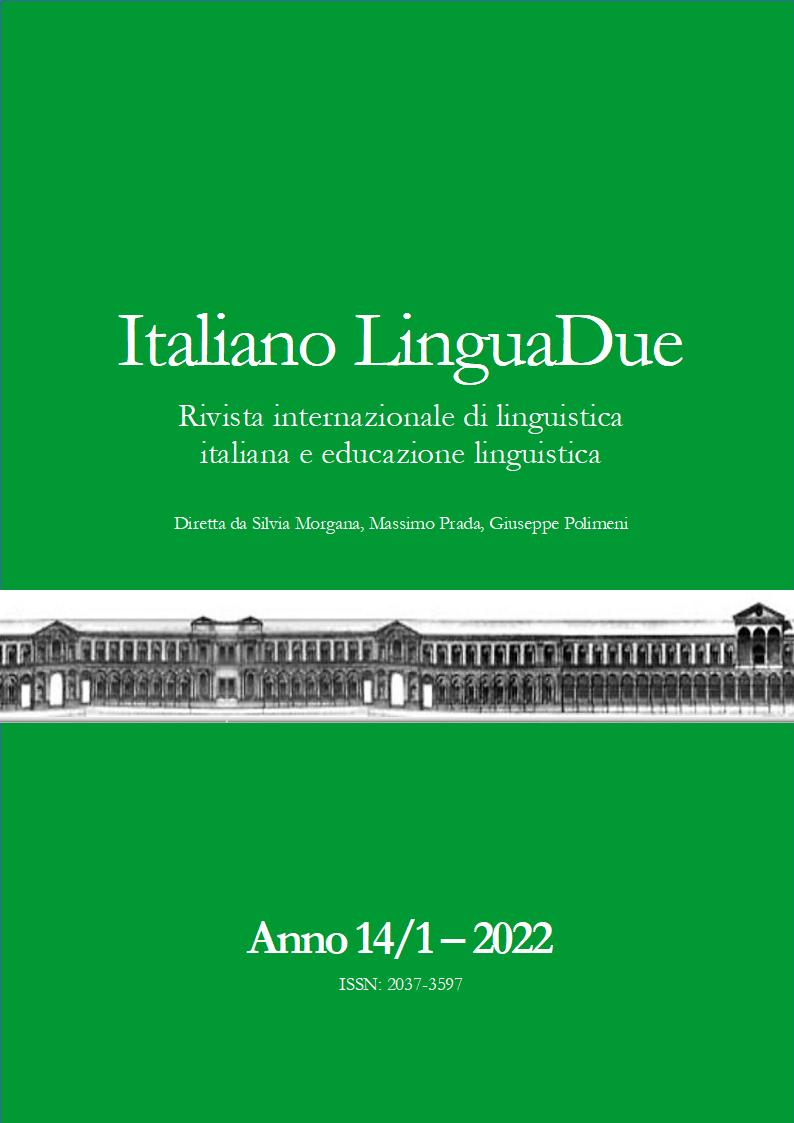CHI FA CHE? STEREOTIPI DI GENERE NELLE IMMAGINI DEI LIBRI DI TESTO DI ITALIANO COME LINGUA STRANIERA
DOI:
https://doi.org/10.54103/2037-3597/18175Abstract
Nei libri di testo di lingua straniera, accanto alla componente linguistica e testuale, troviamo elementi iconici altrettanto rilevanti per l'apprendimento e la trasmissione del sapere, modelli culturali e umani. Le istituzioni educative e le organizzazioni internazionali raccomandano che le immagini dei libri di testo siano sensibili alla dimensione di genere e offrano una rappresentazione equa, con modelli vari e non stereotipati di uomini e donne. Tuttavia, gli studi precedenti volti a verificare la qualità delle immagini dei libri di testo in diversi contesti educativi hanno quasi unanimemente individuato una tendenza verso una rappresentazione ancora piuttosto tradizionale e rigida dei ruoli di genere.Lo scopo del presente studio è quello di analizzare le immagini presenti in 9 libri di testo di italiano come lingua straniera per verificare il trattamento delle immagini delle figure maschili e femminili, attraverso una serie di indici che identificano il campo d'azione e le attività svolte dai personaggi rappresentati nelle immagini. I risultati ottenuti mostrano che la rappresentazione dei diversi generi nei manuali analizzati risponde a modelli stereotipati: le donne sono più frequentemente rappresentate nella sfera domestica o in lavori storicamente femminilizzati, mentre gli uomini appaiono maggiormente nel contesto lavorativo, associati a professioni che godono di maggiore riconoscimento sociale.
Who does what? Gender stereotypes in Italian FL textbook images
In foreign language textbooks, alongside the linguistic and textual components, we find iconic elements equally relevant to learning and the transmission of knowledge, cultural and human models. Educational institutions and international organizations recommend that textbook images be gender-sensitive and offer a fair representation, with varied, non-stereotypical models of men and women. However, previous studies aimed at verifying the quality of textbook images in different educational contexts have almost unanimously identified a tendency towards a still rather traditional and rigid representation of gender roles. The purpose of the present study is to analyze the images present in 9 textbooks of Italian as a foreign language in order to verify the treatment of the images of male and female figures through a series of indices that identify the field of action and the activities performed by the characters represented in the images. The results obtained show that the representation of the different genders in the textbooks analyzed responds to stereotypical models: women are more frequently represented in the domestic sphere or in historically feminized jobs, while men appear more in the work context, associated with professions that enjoy greater social recognition.
Dowloads
Pubblicato
Versioni
- 2022-07-21 (2)
- 2022-07-18 (1)




